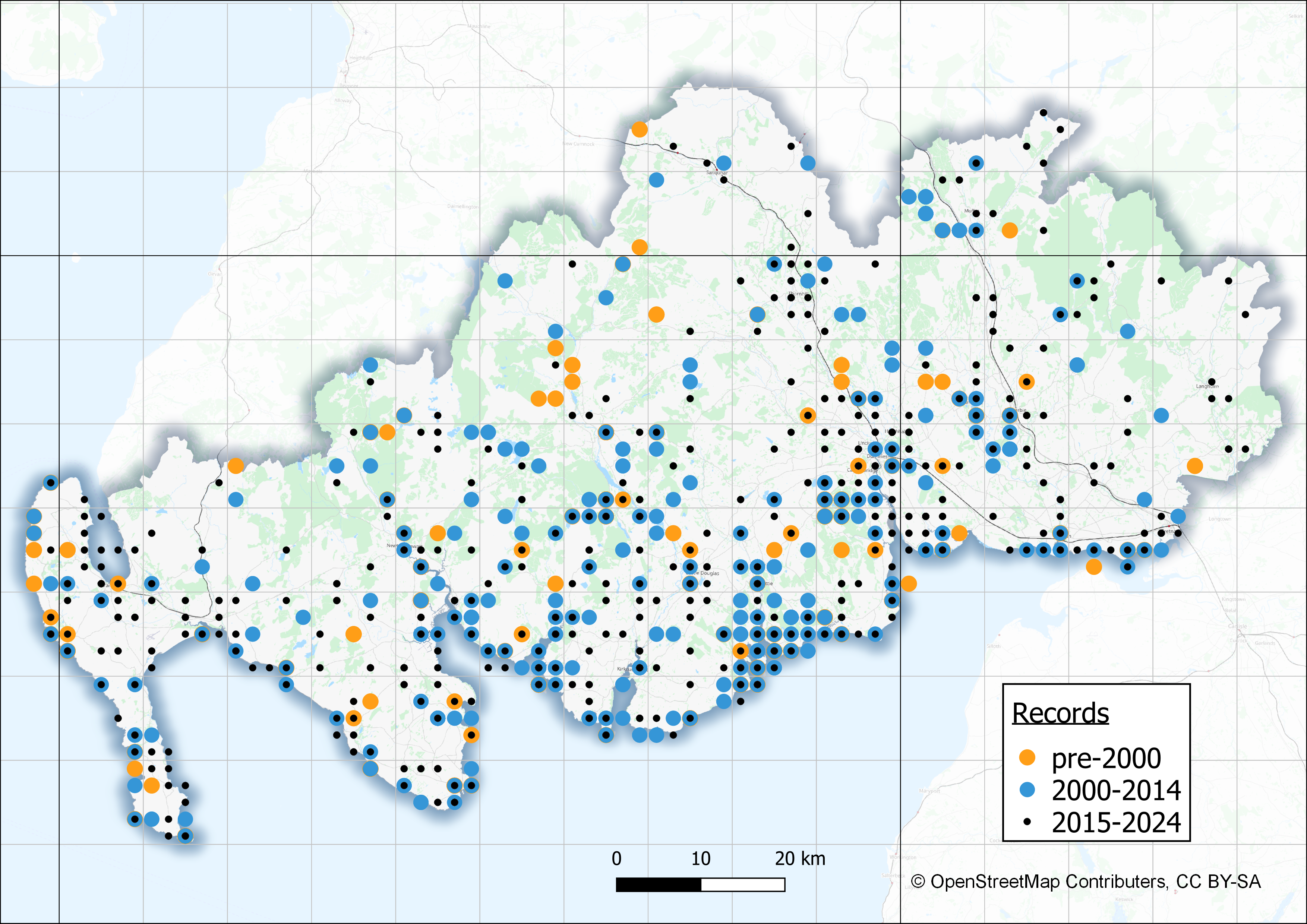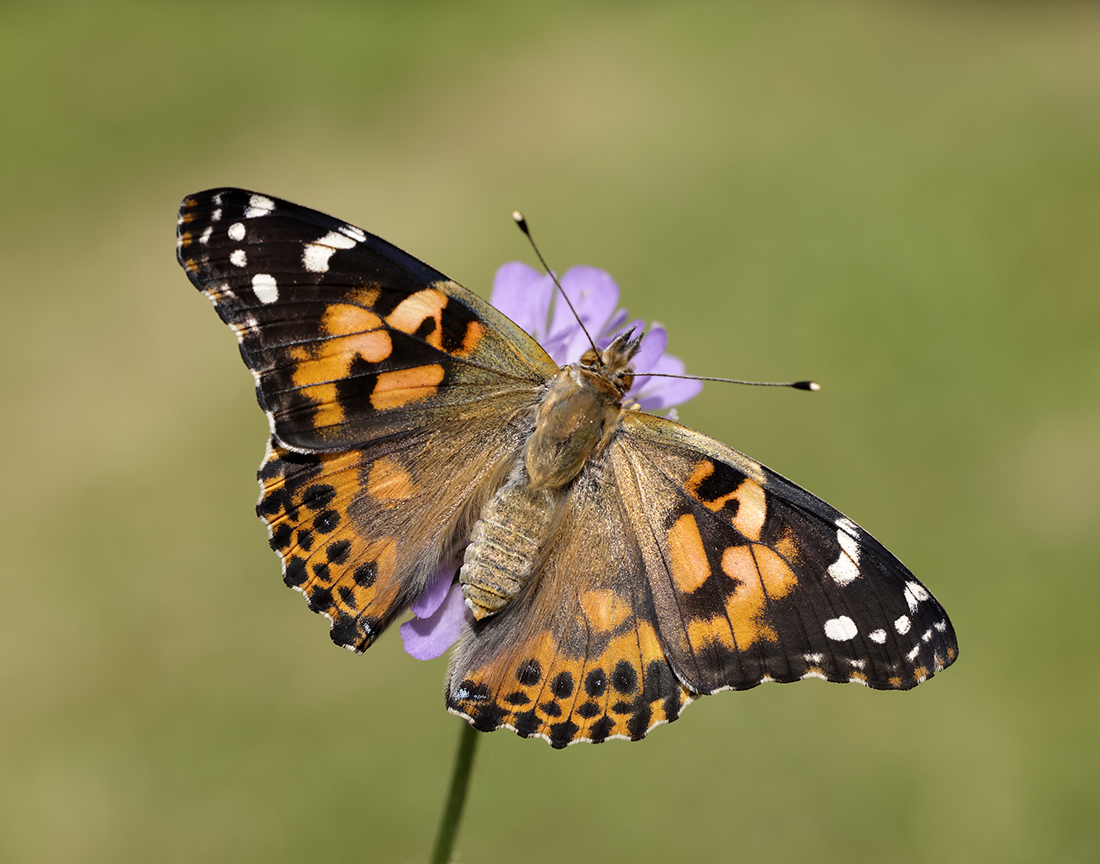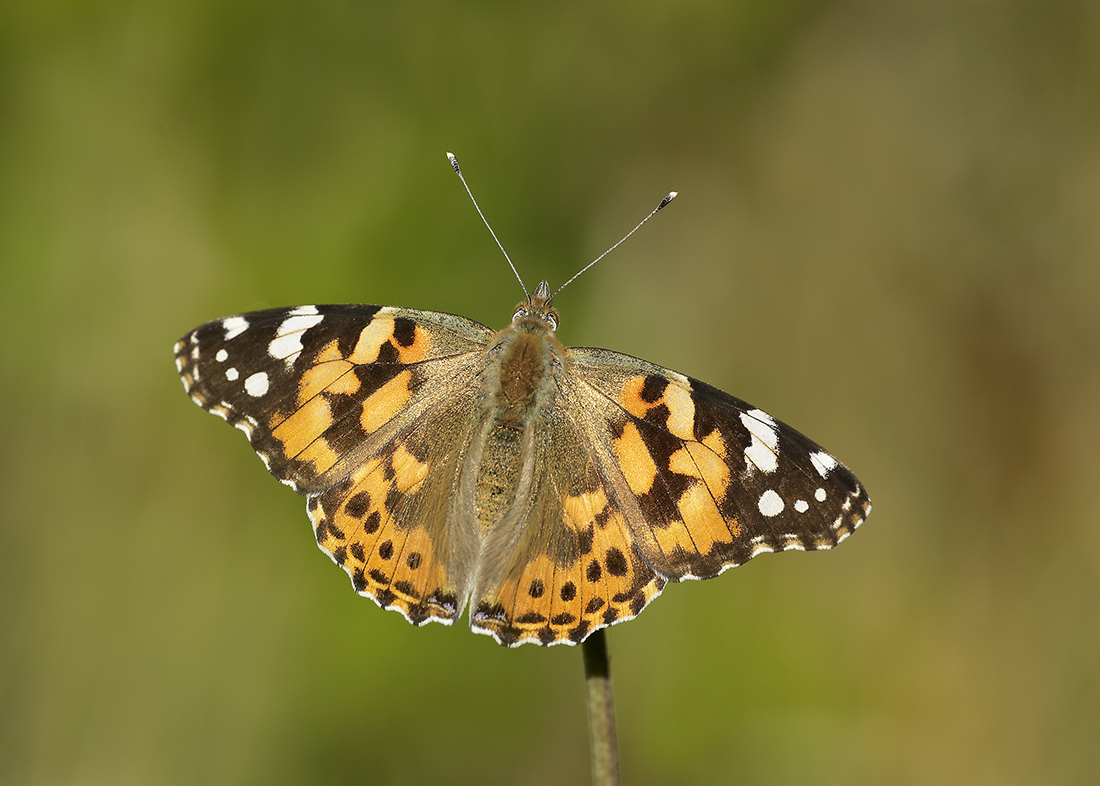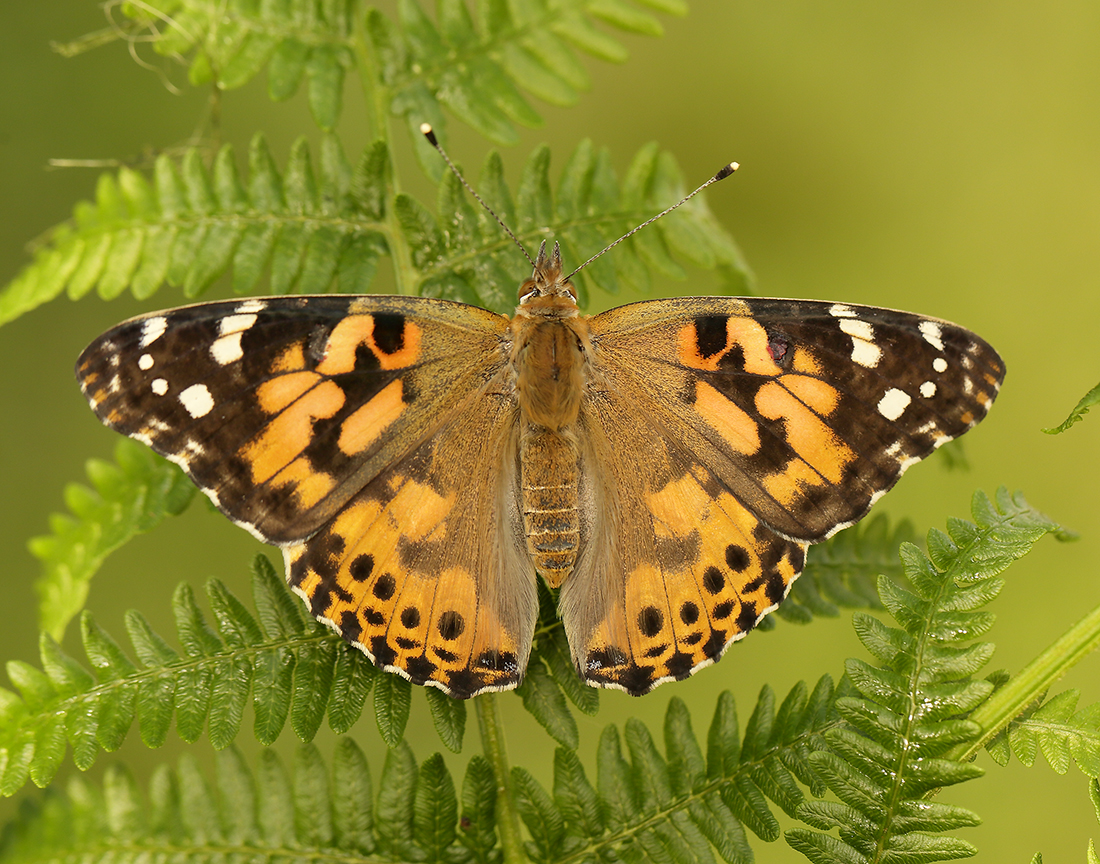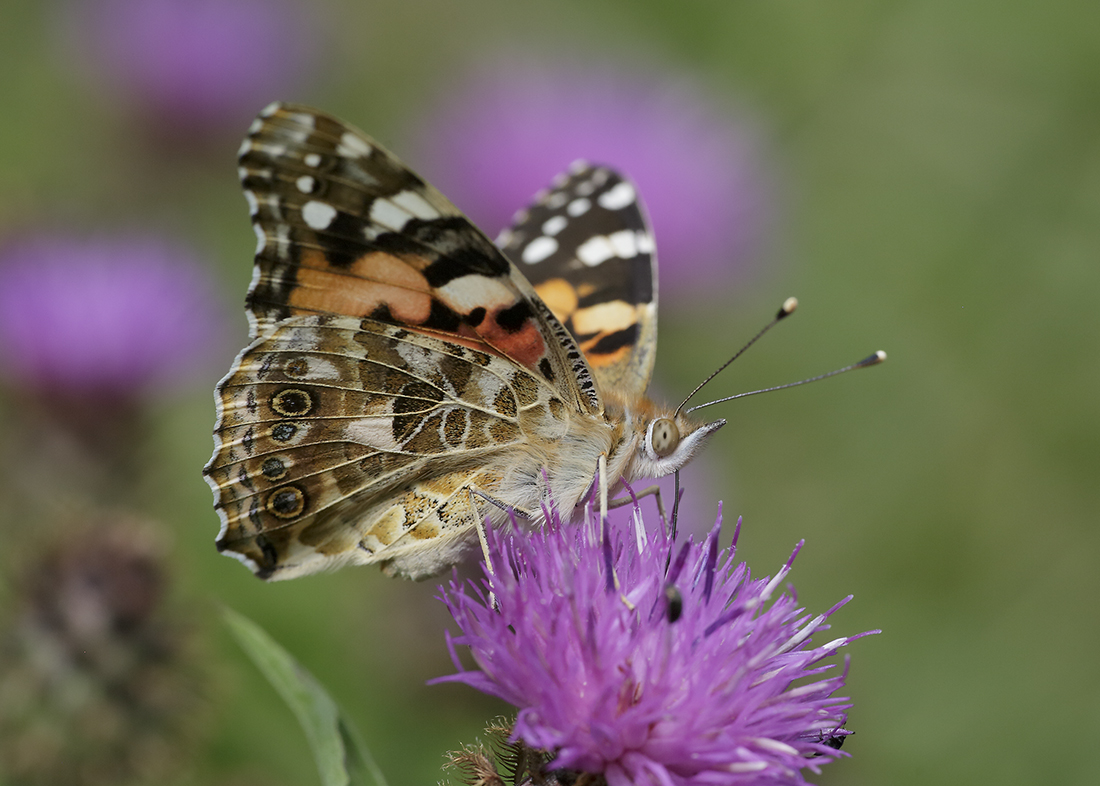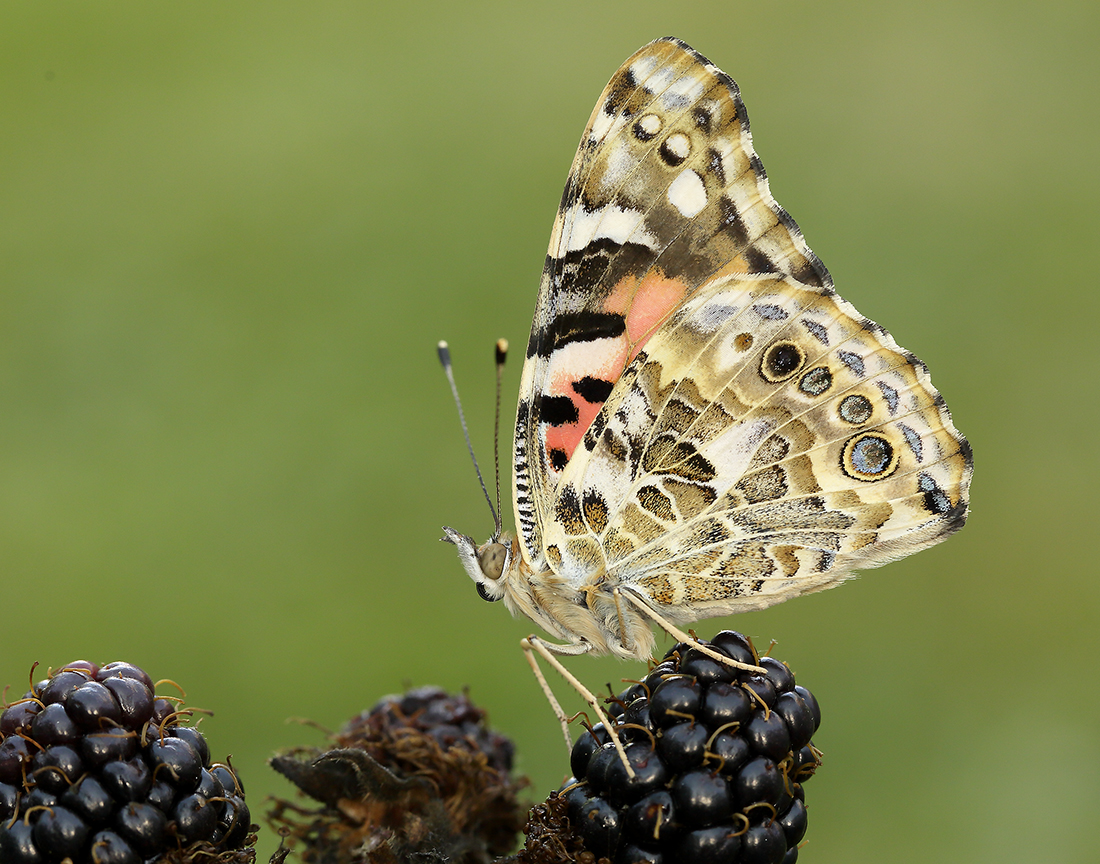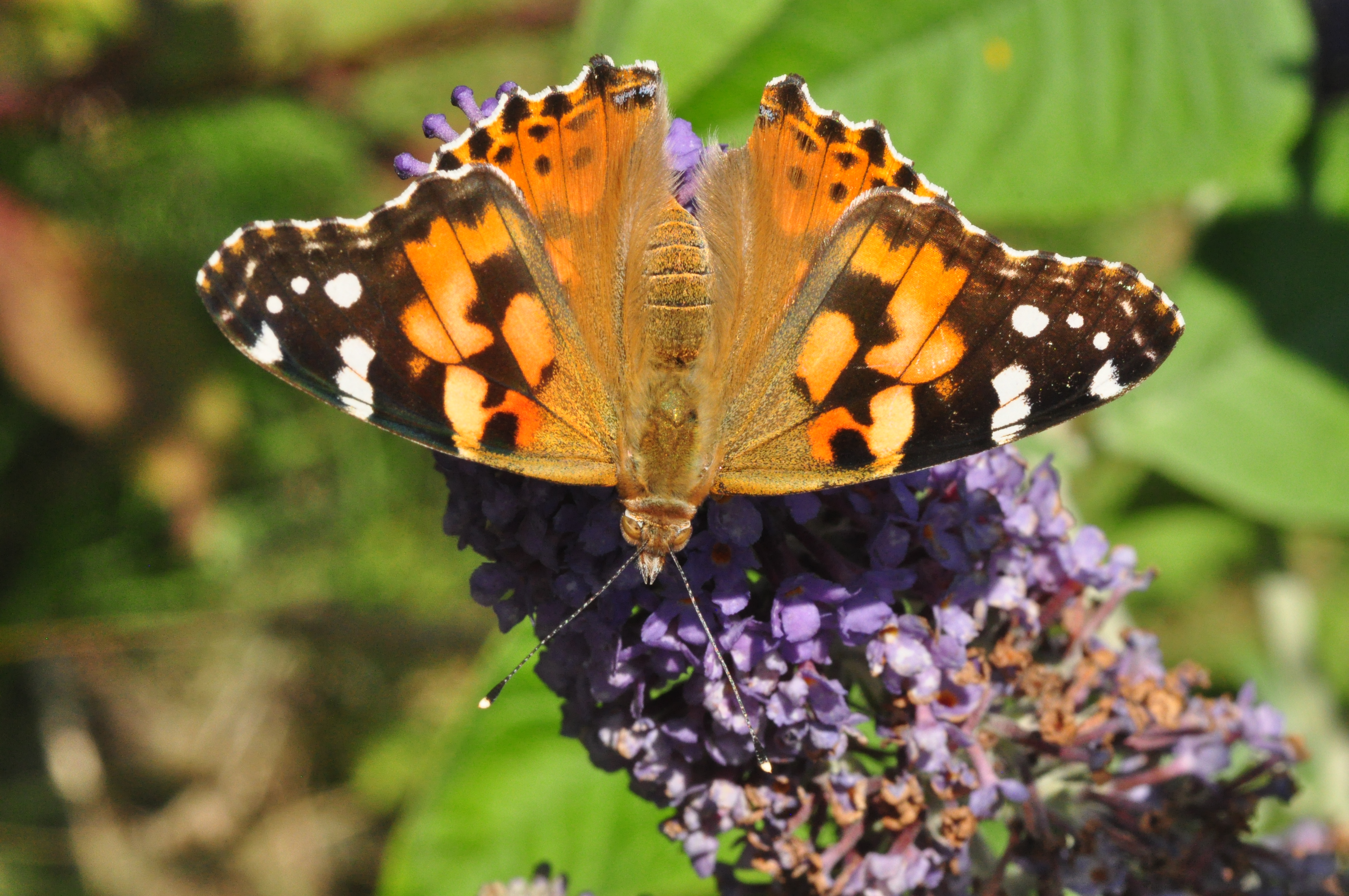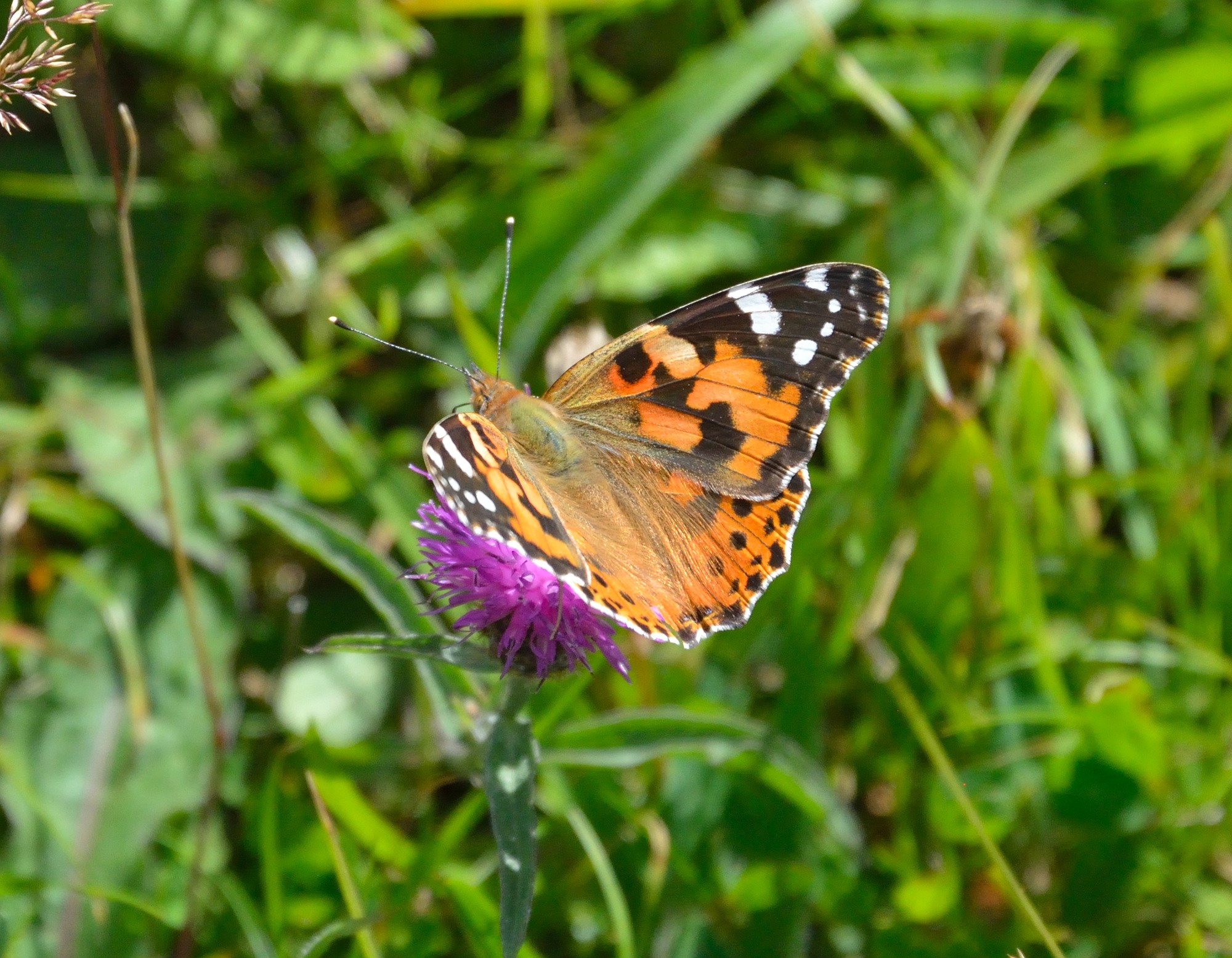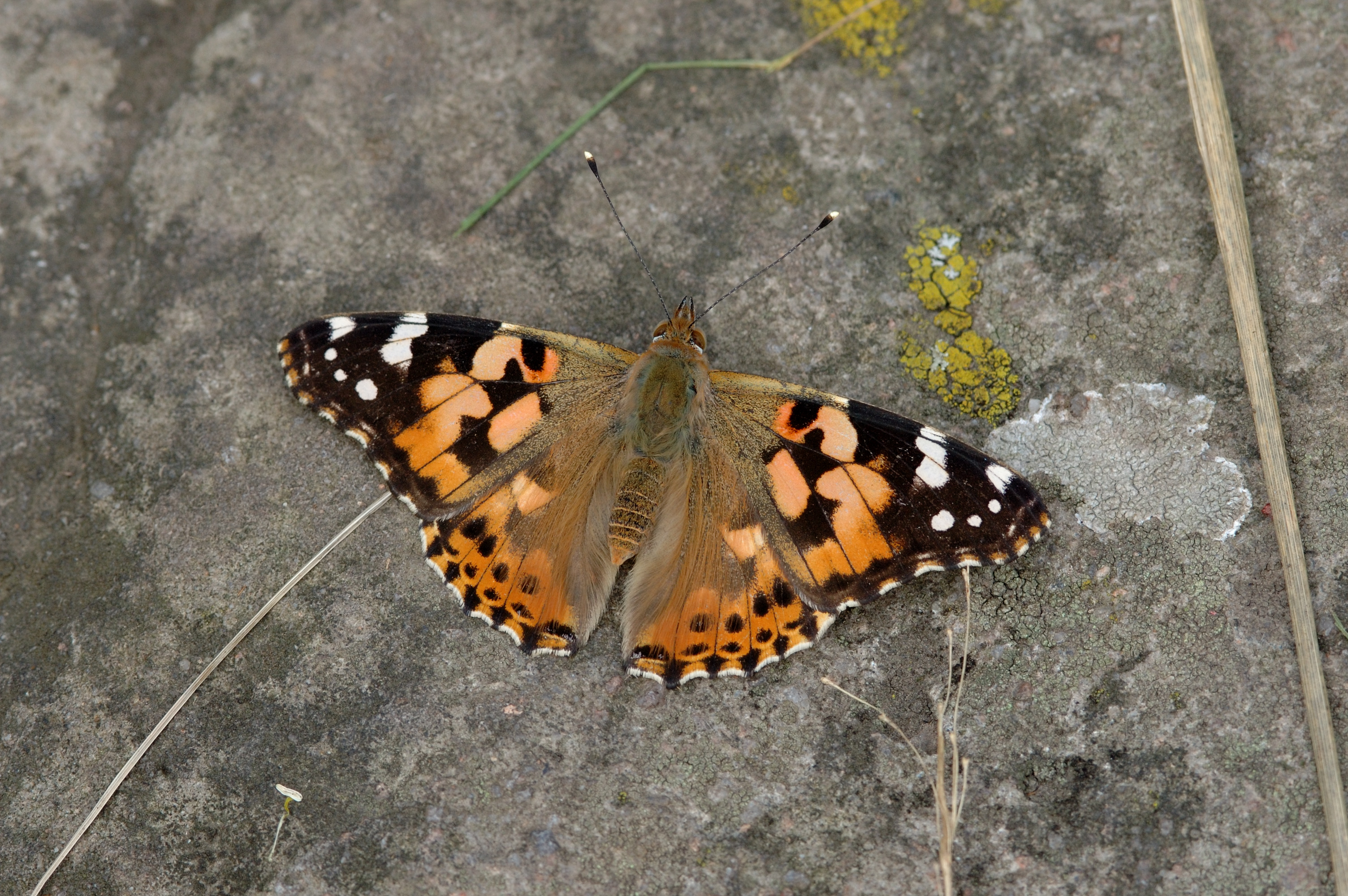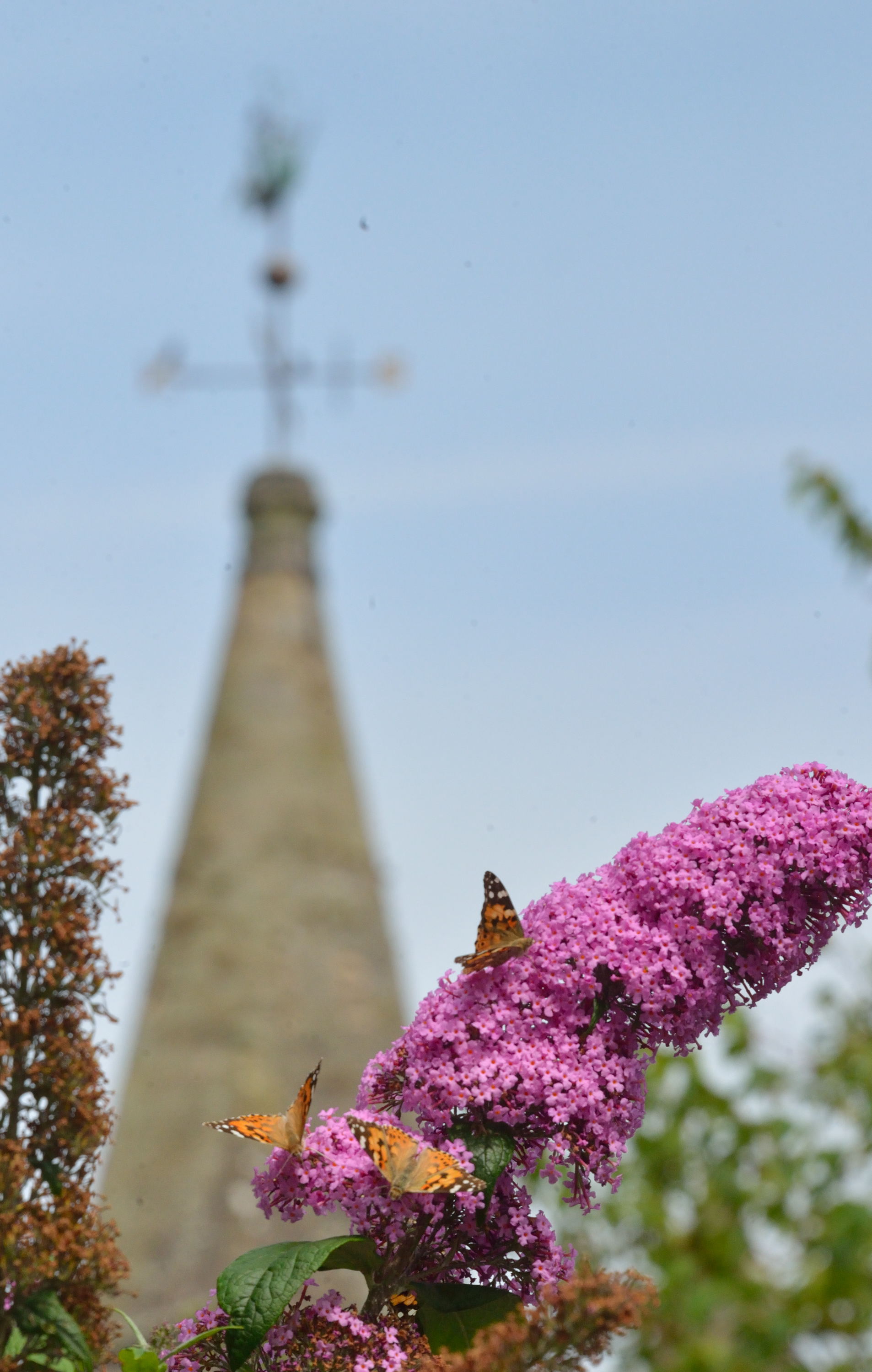Although a handful of Painted Ladies are seen around the coast most years, every so often we have a large influx of migrants. Previous ‘Painted Lady Years’ have occurred in 1912, 1931, 1947, 1969, 1975, 1985, 1996, 2003 and 2009, but the numbers that arrived here in 2019 were exceptional.
The Painted Lady spends the winter in southern Europe and in northern Africa, and many even travel south of the Sahara. Although some butterflies might make the entire trip, most will die and it will be their progeny that continue the journey. The same will happen on the reverse route back north, with successive generations making the round trip, rather than the same individuals.
The trend for all our migrant species is for more frequent and larger ‘invasions’, presumably aided in some way by climate change. The Painted Lady cannot currently survive the winter here in any of its life stages, and most migrate back south in the autumn.
Identification
A close cousin of the Red Admiral, the Painted Lady is another spectacular, unmistakeable and exciting butterfly that we can sometimes see at close quarters in our gardens and parks. Given the distance some individuals are able to travel it is understandable that we often see fresh butterflies with their beautiful salmon pink coloration mixing with completely washed-out specimens.
Life cycle & flight period
A Painted Lady could be seen in almost any month of the year but most sightings are between June to September, peaking in August. The caterpillars can grow fast – in good conditions, they can develop from egg to adult in little more than a month, and so can have two or even three generations a year.
Larval foodplant
When they appear in the summer, females will head for thistles, especially Creeping Thistle, both for nectar and egg-laying, although they can also use other thistles, Common Nettle and Greater Burdock.
Habitats
As for the Red Admiral, the Painted Lady has been seen in virtually all parts of the region, in all habitats, but is most common along the coast, in urban areas – parks and gardens, and on lowland farmland with plenty of thistles.

